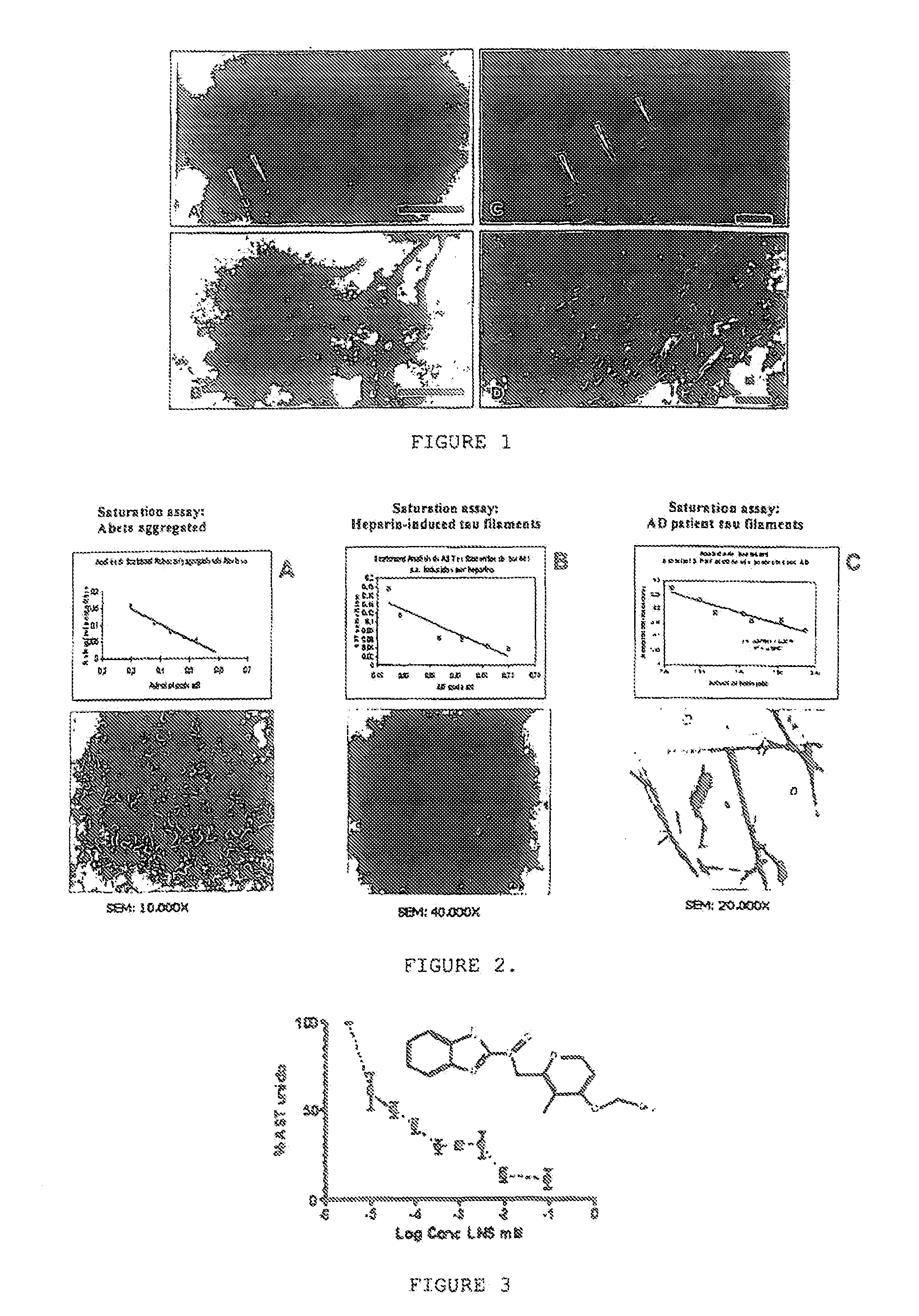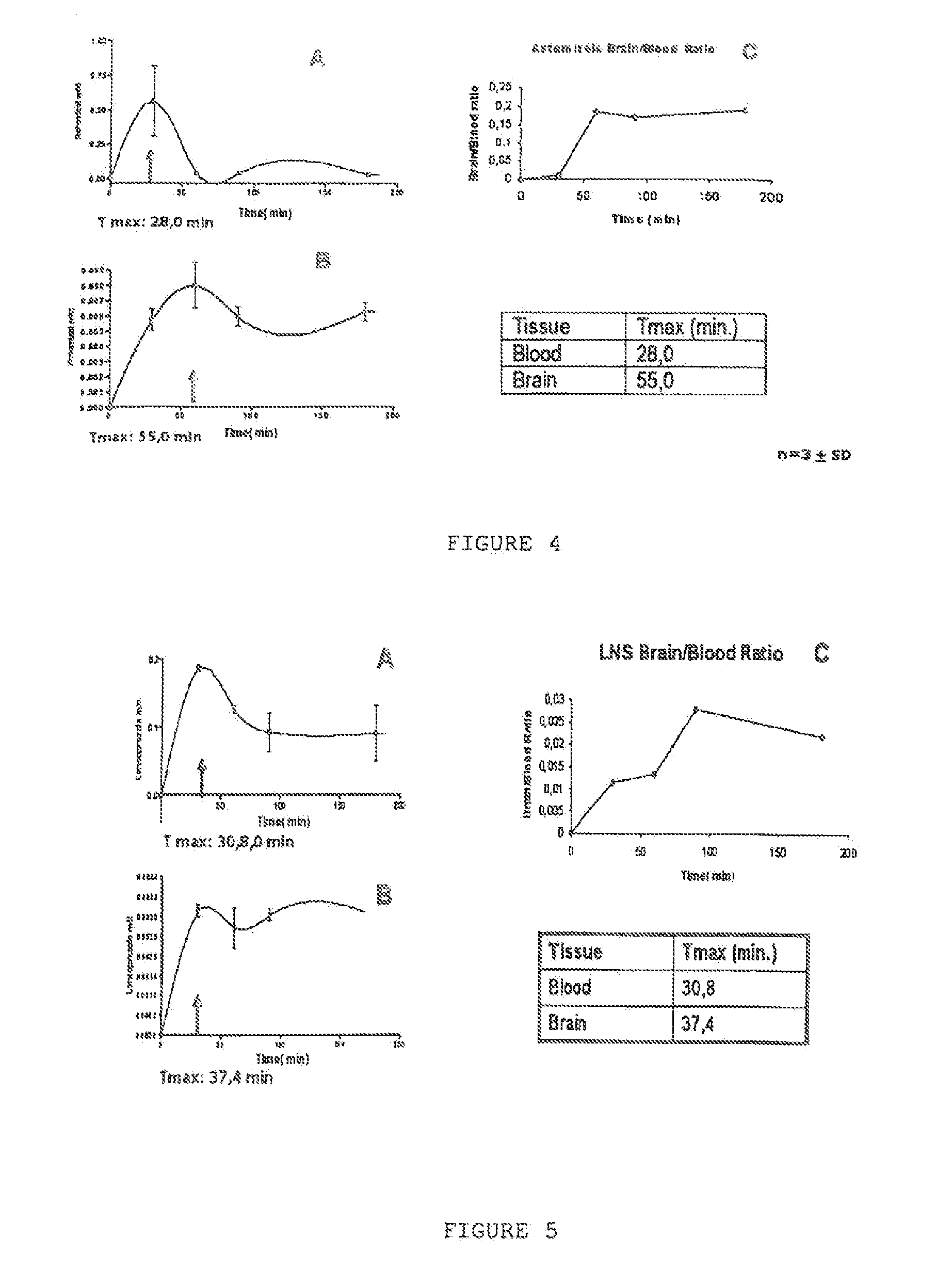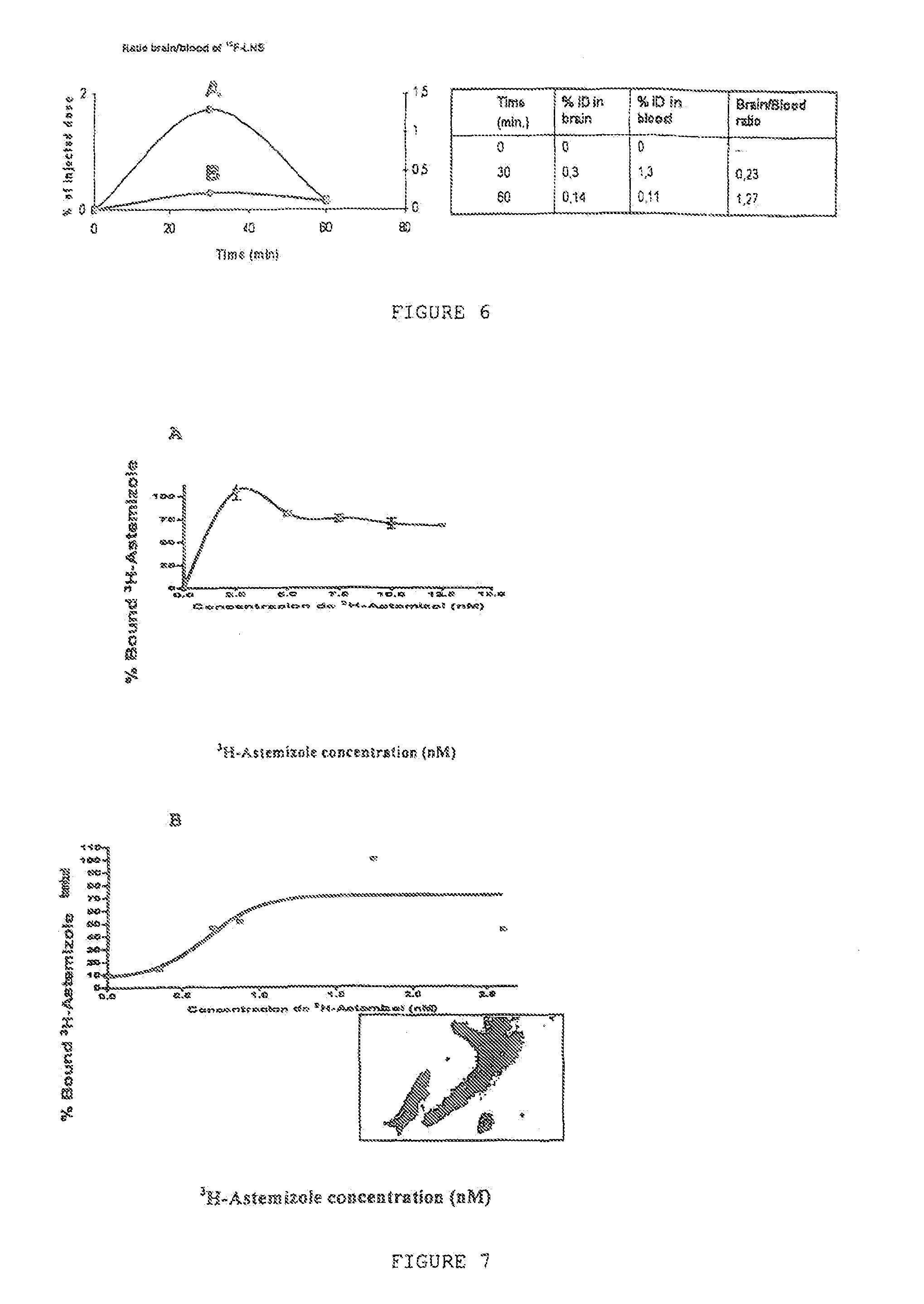Benzimidazole-derived compounds use as markers in the case of neurodegenerative diseases
a technology of benzimidazole and neurodegenerative diseases, applied in the field of benzimidazolederived compounds using as markers in the case of neurodegenerative diseases, can solve the problems of increasing the incidence of ad, the fourth largest cause of death worldwide, and substantial expens
- Summary
- Abstract
- Description
- Claims
- Application Information
AI Technical Summary
Benefits of technology
Problems solved by technology
Method used
Image
Examples
example 1
Appraisal of Benzimidazole Affinity for Tau Protein Aggregates
[0050]In order to evaluate benzimidazole's specific affinity for tau protein aggregates, the bonding affinity parameters (disassociation (Kd) and maximum binding (Bmax) constants) were determined for 3H-Astemizole for tau aggregates, and the inhibition constants (Ki) were also evaluated for tau protein aggregates in 3H-Astemizole displacement tests. The determination of the Kd and Bmax constants is a necessary step prior to the determination of the Ki constants. That is, it is necessary to have the Kd value for a known radioligand in order to obtain the Ki values through inhibition tests and the use of the Cheng-Prusoff equation.
[0051]These experiments were carried out using the tau protein obtained from AD patients and synthetic Aβ1-42 peptide aggregates obtained from solutions of monomers obtained from AD patients.
1.1. Obtention of the Different Tau Protein and Aβ Peptide Aggregates.
[0052]The different proteins were obt...
example 2
In Vitro Evaluation of the Ability of Benzimidazoles to Cross the Hematoencephalic Barrier
[0066]This evaluation was carried out for the compound analyzed in Example 1.3. The analyzed parameters were: specific permeability (Sp), this is an indicator of the compound's ability to cross the hematoencephalic barrier (HEB) by passive diffusion, and the partition coefficient (LogP), which corresponds to the partition coefficient of the compound between Octanol and the pH 7.4 phosphate tampon, which is a predictive element for the compound's penetration of the HEB. The determination of the Sp values was carried out as described by Adveef and Tsinman, 2006.
[0067]The Parallel Artificial Membrane Permeability assay (PAMPA) is based on the ability of compounds to diffuse from a donor compartment through a Polyvinylidene Fluoride Membrane Filter (PVDF) covered with a phosphatidylcholine solution at 20% towards a second acceptor compartment, which is analyzed. Likewise, a comparative analysis was...
example 3
Evaluation of the Astemizole and Lansoprazole In Vivo Pharmacokinetics in Animal Models
[0072]The Lansoprazole and Astemizole compounds were analyzed by high-performance liquid chromatography (HPLC) associated with the detection of UV under chromatographic conditions adapted from the method described by Kanazawa et al., 2002.
[0073]FIGS. 4 and 5 show the pharmacokinetic experimental results for the Lansoprazole and Astemizole compounds. These results evidence that Astemizole (FIG. 4) efficiently reaches the cerebral tissues (C), the time for maximum concentration (Tmax) is at 28 minutes in blood and 55 minutes in the brain, which is compatible with its potential as a PET radiotracer since Fluor 18's half-life is 120 minutes. It was also observed that the Astemizole's average life in plasma is less than in the brain. This shows a permanency in the encephalon of least 3 hours, which is compatible with its use as a cerebral radiotracer (Ono et al., 2006, Mathis et al., 2004, 2005).
[0074]...
PUM
| Property | Measurement | Unit |
|---|---|---|
| flow rate | aaaaa | aaaaa |
| concentrations | aaaaa | aaaaa |
| length | aaaaa | aaaaa |
Abstract
Description
Claims
Application Information
 Login to View More
Login to View More - R&D
- Intellectual Property
- Life Sciences
- Materials
- Tech Scout
- Unparalleled Data Quality
- Higher Quality Content
- 60% Fewer Hallucinations
Browse by: Latest US Patents, China's latest patents, Technical Efficacy Thesaurus, Application Domain, Technology Topic, Popular Technical Reports.
© 2025 PatSnap. All rights reserved.Legal|Privacy policy|Modern Slavery Act Transparency Statement|Sitemap|About US| Contact US: help@patsnap.com



